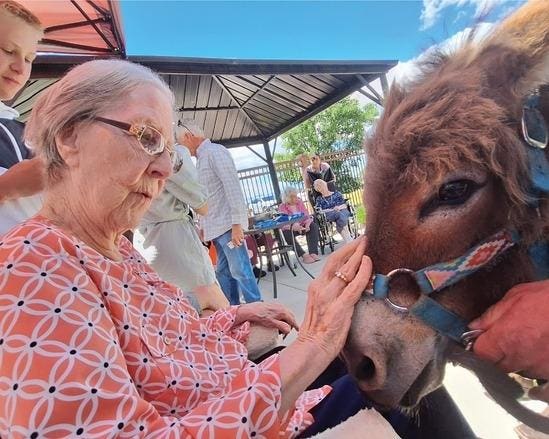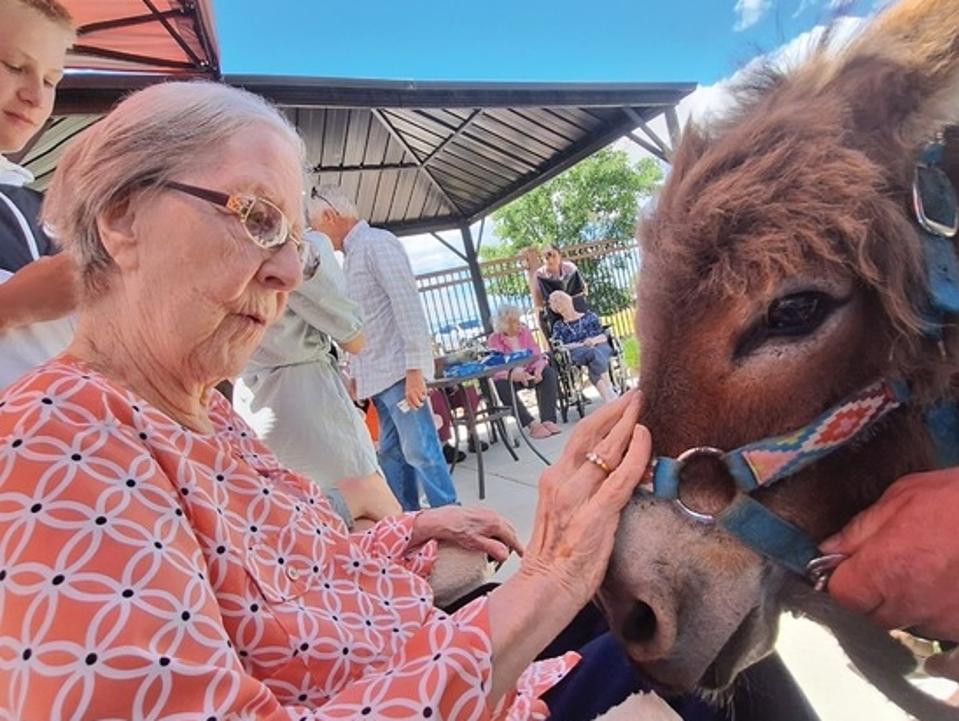Living Life To The Fullest Is Not About Giving Up

Community Nursing Services in Utah is a nonprofit hospice and home health agency that brings comfort to patients and families through unique programs like pet therapy.
Community Nursing Services
YoloCares is a California based NPHI member organization, seen here taking a patient out for a special bike ride.
YoloCares (Northern California)
Discussions about end-of-life care in America are often met with silence, confusion or fear. Yet millions of families face it every year, often without the support, clarity, or resources they need. Tom Koutsoumpas, CEO and founder of the National Partnership for Healthcare and Hospice Innovation (NPHI), argues that it’s time we redefine hospice not as a last resort, but as a profound opportunity for quality, dignified living until the end.
As a stage 3 melanoma survivor, Koutsoumpas understands how deeply caregiving can touch our lives. “I’m lucky to be here… It’s long been part of the very core function of hospice care to make sure that a caregiver was recognized as an important part of the team,” he says.
Koutsoumpas believes hospice can be a transformative force for families and caregivers, but first, the myths about it need to be addressed.
Dispelling Myths About Hospice
Tom Koutsoumpas, CEO of the National Partnership for Healthcare and Hospice Innovation (NPHI)
NPHI
“One of the myths is that you have to be imminently dying,” he explains. “You don’t. You have to be terminal, and you have to have a six-month prognosis based on the general overall judgment of the physician. But it’s not a steadfast rule that you’re in continued decline or that you’re about to die.”
Instead, Koutsoumpas says, hospice’s role should be expansive. The goal, he emphasizes, “is to make sure that patients and their families live to the fullest until the very end of life.” That might mean savoring family dinners, laughter with grandchildren, or peaceful moments at home. “If a patient could have dinner, could be interactive with their family… right up to the very end of life. Then that means we were successful in caring for them.”
Hospice Innovations and Technology
Hospice operation is evolving. “We want to make sure that we can use the latest tools of technology and support to care for our patients and families,” says Koutsoumpas.
The adoption of telemedicine in palliative care accelerated because of the pandemic. Telepalliative services such as remote consultations with clinicians have become invaluable, especially for symptom management and emotional support at home. Patients with mobility issues or in rural areas also benefit from such flexibility, helping extend care to underserved populations. A cost-focused study of TeleHospice found that combining virtual and in-person visits could reduce staff travel expenses by over $115,000 annually.
Beyond telehealth, specialized innovations are making their mark. One such example: robotic companion pets. Though still emerging, research indicates these devices may offer emotional benefits, reducing loneliness and agitation among hospice patients. “It’s a really wonderful tool that has changed their lives,” Koutsoumpas says.
Equity and Disparity in Hospice Care
A 2018 Cornell University study revealed that Black patients often face poorer experiences in hospice care compared to white patients, not necessarily because of different medical conditions, but because of a breakdown in trust and communication.
Systems that provide comprehensive support regardless of a patient’s financial or housing situation are vital. NPHI represents more than 120 programs across 39 states, and it operates a national helpline, 844-GET-NPHI, where families can get help navigating palliative care options. They’ve also developed free caregiver guides in partnership with organizations like the American Cancer Society. These cover advanced caregiving for cancer, palliative care, cardiac, dementia, lung, veterans’ needs, and soon, pediatric care.
“We care for patients, for people without regard to their ability to pay. It doesn’t matter if they can afford it or not, we accept everybody,” Koutsoumpas says.
Emmanuel Hospice in Grand Rapids, MI, is an interfaith nonprofit hospice offering patients and loved ones meaningful experiences, like virtual reality.
Emmanuel Hospice
Redefining the Conversation
Tom Koutsoumpas’ insights are indicative of a growing movement in hospice care: one that prioritizes early referral, equality of access and compassionate, tech-informed support. His calls for dispelling myths, innovating care delivery, and addressing inequity align with policy discussions and reforms throughout the field of palliative care.
As he puts it, hospice should not be seen as surrender; it should be seen as support, as life-affirming. “The goal of hospice is to make sure that patients and their families live to the fullest until the very end of life.”
The Well Beings Blog supports the critical health and wellbeing of all individuals, to raise awareness, reduce stigma and discrimination, and change the public discourse. The Well Beings campaign was launched in 2020 by WETA, the flagship PBS station in Washington, D.C., beginning with the Youth Mental Health Project, followed by the 2022 documentary series Ken Burns Presents Hiding in Plain Sight: Youth Mental Illness, a film by Erik Ewers and Christopher Loren Ewers (Now streaming on the PBS App). WETA has continued its award-winning Well Beings campaign with the new documentary film Caregiving, executive produced by Bradley Cooper and Lea Pictures, that premiered June 24, 2025, streaming now on PBS.org.
For more information: #WellBeings #WellBeingsLive wellbeings.org. You are not alone. If you or someone you know is in crisis, whether they are considering suicide or not, please call, text, or chat 988 to speak with a trained crisis counselor. To reach the Veterans Crisis Line, dial 988 and press 1, visit VeteransCrisisLine.net to chat online, or text 838255.

